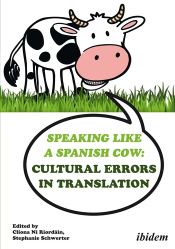Death Deemed Undead. The Fragility of Life and the Theme of Mortality and Melancholia In Omar Khayyam’s ‘Rubaiyat’. Abhik Maiti.
American Research Journal on English and Literature. [2018, in Press]
Archives
How Khayyám Got Lost in Translation. Cultural Errors and the Translators of the Rubaiyat
How Khayyám Got Lost in Translation. Bentolhoda Nakhaeï.
In: Speaking like a Spanish Cow: Cultural Errors in Translation. Clíona Ní Ríordáin, Stephanie Schwerter (eds.). Stuttgart : Ibidem Press, 2019. 368 p.
ISBN: 9783838272566.
Summary:
What is a cultural error? What causes it? What are the consequences of such an error? This volume enables the reader to identify cultural errors and to understand how they are produced. The meta-translational problem of the cultural error is explored in great detail in this book. The authors address the fundamental theoretical issues that underpin the term. The essays examine a variety of topics ranging from the deliberate political manipulation of cultural sources in Russia to the colonial translations at the heart of Edward FitzGerald’s famous translation The Rubáiyát of Omar Khayyám. Adopting a resolutely transdisciplinary approach, the seventeen contributors to this volume come from a variety of academic backgrounds in music, art, literature, and linguistics. They provide an innovative reading of a key term in translation studies today.
